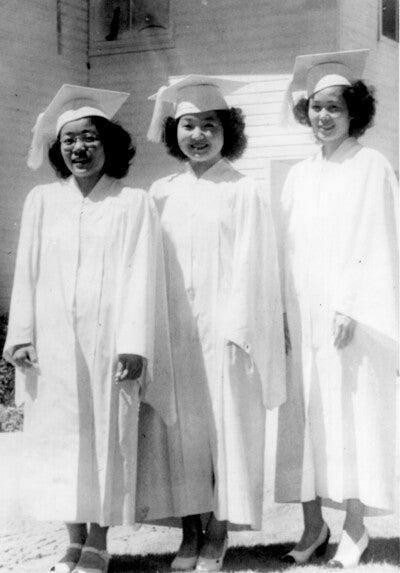
I met Astha in the Fall semester of 2022 when she visited the Wurzburger Reading Room in the Hayden Library. She was working with Dr. Karen Leong in the Asian Pacific American Studies program, searching University Archives collections for evidence of the impact of the War Relocation Authority (1942) on ASU students at the time. I hope you appreciate her post describing the insights and reflections from her research.
–Shannon Walker, ASU University Archivist
My name is Astha Rohit and I am a second-year student studying biomedical sciences. As an Asian American, I have always wanted to learn more about my heritage and our history. This desire led me to investigate the treatment of Japanese American university students during a time of great turmoil, World War II, alongside Dr. Leong and Ms. Walker. Our journey is not over yet, but we wanted to share a glimpse into our research with you, so the discussion regarding the declaration of a group of "others" and the inhumane treatment that results can begin. Thank you for choosing to read this today and helping us fight the silence.
December 7, 1941. Fear spread throughout the United States. Fear toward the other and the future was exhibited by all. The fear was then mobilized into strong nationalism. One’s Americanism was their armor as the country entered World War II. In a time of unity and embracing of nationality, the idea of any form of separation seems almost foolish and ultimately reckless, especially toward the utmost devoted.

In desperate attempts to produce a scapegoat for the mass anger following this attack, the country chose those who immigrated to America or had family that had done so with hopes of creating a new life for themselves and their future generations. The Japanese Americans were stripped of their nationality and reduced to the enemy. This portrayal snowballed into their humanity being snatched and degraded. Their lives had little meaning to the observer and were picked apart. Their homes became reservation camps and their dreams were squandered. This relocation preludes that there is an extreme likelihood that those pursuing higher education were not able to continue doing so at their existing institutions, but the hard evidence of their inability to do so is still being looked for. This inhumanity, analogous to the hundreds of Japanese Americans faced during this time, was disregarded and largely unwritten. The upheaval they faced was faced with silence by their fellow Americans in the past. Attempts to recover the past and shine a light on these wrongdoings are met with extreme obstacles. The hysteria alluded those living during this time to believe what was occurring was natural and unnecessary to largely record, resulting in an archive that mimics the silence at the time.
Archival silence, or a time of history that is purposefully omitted, was a hurdle that I did not see or forecast before I began my journey. I was aware that the path to uncovering a dark time that most want to forget due to its cruelties would likely require reading between the lines to discover the hard truths that were difficult to speak, but a purposeful omission of a time that affected so many seemed too cruel and abnormal to fathom for an individual who spent history classes focused on the known with little thought spent on the unknown. Thus, when Dr. Leong came to me to speak about a project delving deeper into a subject focused greatly on in schools, World War II, but with a spotlight on a sector that is not so spotlighted on, I was extremely intrigued. The treatment of Japanese Americans is briefly touched upon in most schools as a side to the discussion of the United States' entry into the war. We speak of the camps, relocation, and upheaval, but on a general stage. Rarely, if ever, have I seen discussions regarding the students and how they must have had their whole lives disrupted in a second. I suppose this discussion is avoided as it makes the situation feel too real, too close to home. Our feelings now are given more importance than the feelings of those who lived through it and their families that deal with this generational trauma. Their stories matter and deserve to be sought after regardless of any barriers that stand in the way, including archival silence.

Universities across the country followed in the footsteps of the government turning away Japanese American students from pursuing or continuing their higher education. The exact details of the process at Arizona State University are unclear and are the basis for this research. A few clues preceded this dive and provided me with fuel to find out more about this concealed situation. James “Jimmie” Komatsu spoke about having to withdraw from ASU during the war and was not able to return to ever complete his degree. He has unfortunately passed away, but his nephew, Kenny, in his remembrance, has asked ASU to award his uncle a posthumous degree. Similar acts have been requested and completed at various universities in California. Connie Okazaki was attending ASU prior to the onset of the war in the West but was unable to complete her degree until 1947 following a return to college. These two cases and the hundreds of hidden ones suggest that a policy was at play that prevented these students from studying at ASU during the war. Discovery of this policy can enable us to more easily grant these individuals the degree they deserve. The archival silence has slowed this process down, but the journey continues and justice will be awarded.